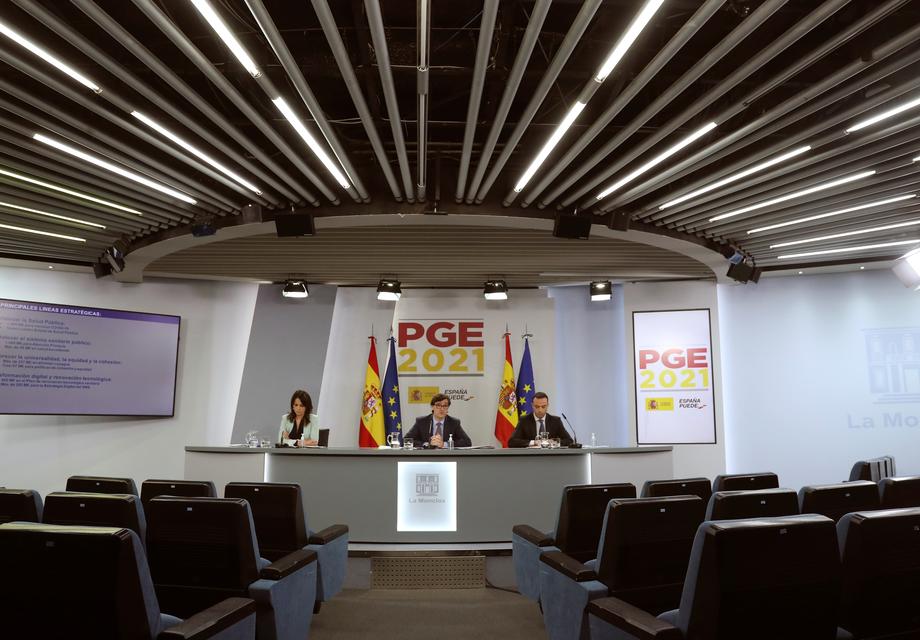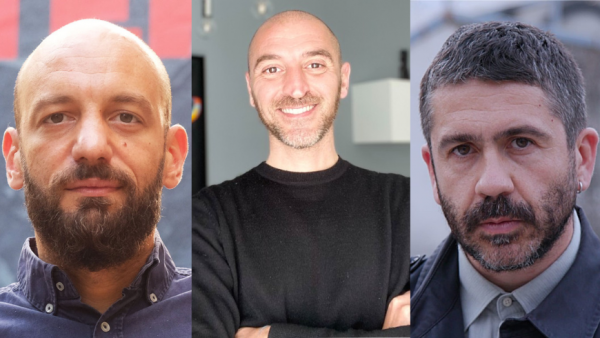Pilar Velasco is an investigative journalist at Cadena SER and a Yale World Fellow ‘18
Zur deutschen Version
In Spain, amid the COVID-19 pandemic, national and regional governments are restricting press access to hospitals, elderly residences, and official institutions – including the regional parliament in Madrid. Journalists have denounced the attempt at message and image control, with many fearing that these excessive practices put in place during the months of confinement will last into the future.
At the beginning of the pandemic, Spanish journalists were greeted with an information blackout, followed by government press conferences in which questions had to be sent through a WhatsApp chat, filtered by Spain’s secretary of state for communication. After several complaints, questions were allowed to be posed live on a videoconference. Now, eight months later, journalism has become impoverished as a result of the pandemic. Many institutions have found the perfect excuse to impose restrictions.
Shortcomings in public health data
Spanish journalists are covering the health crisis amidst a profound famine of information, transparency, and access to the administration. These shortcomings include the absence of official and relevant data, changes in the criteria of the Ministry of Health, and the deliberate concealment of information.
Following the numbers of the pandemic is essential to know the rate of infections, hospital occupancy, and the total death toll. However, the capacity of the Department of Health to manage and centralize the data of Spain’s 17 autonomous communities has proven insufficient, ineffective, and outdated. Continuous changes of criteria make it difficult to follow and build statistical chains and patterns. Many reporters are asking the same question: “How are we going to publish this data if we don’t trust it ourselves?”
In many cases, the most useful databases have been assembled by journalists. For instance, Datadista, an outlet specialized in investigative data, has created its own COVID-19 data sets. Datadista co-founder Ana Tudela said this had become necessary due to the poor quality of the data associated with COVID-19 from the Ministry of Health. “We realized that they were not going to provide us with a site where all the information would be stored in a reusable and accessible format. We had to transform the PDFs so that we could see how the data varies and create our own datasets. Now, we have about 50 datasets that have been used by journalists and scientific researchers.”
She added: “They (officials) consider the press as an essential service, but they complicated our lives by paralyzing requests for transparency and public information, providing COVID information in PDFs with constant data modifications.” In fact, she recalled, the prime minister promised a comprehensive data board that never came.
In the first week of October, the Ministry of Health changed its statistics system and thereby wreaked havoc at the worst possible time – just as it became necessary to monitor the second wave of outbreaks. The data modification made it almost impossible to follow the evolution of the virus for days. The National Epidemiology Center is the only website of the ministry that offers a reproducible data series on positive cases, hospitalized patients, and COVID deaths. Its COVID-19 Status Panel has not been updated since May 20.
In response to the Ministry of Health’s lack of transparency, the Council for Transparency and Good Governance (CTBG), the official department that ensures compliance with the transparency law, condemned the Ministry for ignoring its requirements and “the constitutional right to access public information”.
Message and image control
At the same time, government departments have stopped holding in-person press conferences, in accordance with their remote work policies. But virtual press conferences have hindered the flow of inquiry and made it impossible to cross-examine officials.
Oriol Güell, a journalist with the newspaper El País who has covered public health in Spain for almost a decade, is deeply concerned about COVID-era limitations on the press. “There is a control of the image and a control of the questions”, he said. Many (government) acts are reduced to the spread of political propaganda without content.”
Limitations on the press in Madrid, the epicentre of the pandemic, are still strictly imposed by the regional government. Television camera operators cannot enter the Madrid Parliament, making live news unfeasible. Statements of politicians and footage of parliamentary proceedings are provided to the media by a single, delayed signal pool from Madrid’s public television. There is hardly any space to interview politicians on a daily basis unless they decide to call in to make their own statements.
Information blackouts across Spain
In July, the Madrid government held a closing ceremony at the Ifema Hospital (built in March and closed in May after treating 4,000 COVID patients), to celebrate the de-escalation of the pandemic. The event ended inside the hospital with live music and the regional president of Madrid and the vice mayor serving drinks and hot dogs from a food truck.
Journalists covered the unexpected party with shock – observing that attendees did not have the space to respect the proper safety distance. As a result of that press coverage, journalists are no longer allowed to enter official events without government approval.
Journalists in Madrid have been banned from hospitals, health centres, and interviewing health personnel at their workstations for “security reasons”. Amid this press blockade, doctors and health workers have given interviews to the media mainly by telephone. And Madrid’s limitations on the press have only gotten worse in the second wave.
In September, health workers received an order from the Madrid government, forbidding them to speak to the media and urging them “never to act on their own”. The regional government, through the head of health, must authorize each intervention and hand pick medical personnel for statements. The protocol was written in 2003, but remained dormant until this September when a doctor from Fuenlabrada Hospital (Madrid) made critical statements on Cadena SER radio.
Eight months into the pandemic, journalist Fernando González from the weekly La Sexta programme “Salvados”, conducted interviews in Berlin health centres and hospitals – but was still banned from doing so in Madrid. He explained on his programme: “Since the fall, we’ve asked for permission to enter four hospitals – Infanta Sofia, Infanta Leonor, Hospital del Henares, and Puerta de Hierro. All were denied. Primary care and direct patient care centres have denied us access as well. We’ve also been denied interviews with political officials to evaluate the management of the pandemic. In essence, the government is promoting sponsored content.”
And these limitations are not only happening in Madrid. Photographer Alvaro Calvo (NYT, CNN, The Guardian), who has been covering the pandemic in Spain’s northeastern Aragón region, noted his own difficulties. “Last April I entered and photographed an elderly residence in Aragón. The photos were distributed internationally by Getty Images. Hours after publication, I received a judicial injunction from the Aragón government, prohibiting their distribution. Getty refused to unpublish them internationally, but agreed to make them inaccessible in Spain. The pressures have been constant.”
The “new normal” for the Spanish press?
Eight months into the pandemic, restrictions on the press have become the “new normal” in Spain.
Many Spanish journalists share the same fear as Oriol Güell of El País, who warns of an uncertain future for Spanish press. “I am afraid that many of these practices are here to stay”, he said. “Once they become the norm, it is very difficult to change them back.”
Gonzo concludes, “It’s going to be up to us, the press, to reject these practices as the new norm. We have to fight back.”
Pilar Velasco is an investigative journalist at Cadena SER and a Yale World Fellow ‘18
- Click here to read more from IPI’s new reporting series Media Freedom in Europe in the Shadow of Covid



